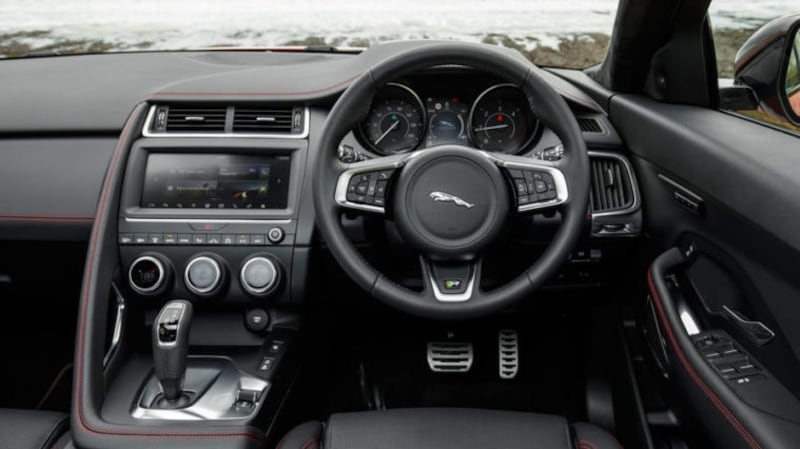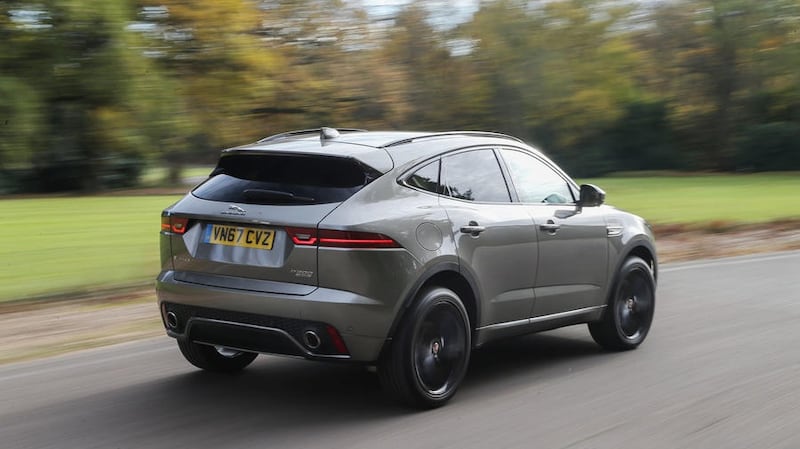While Brexit is causing all sorts of consternation in the UK's motoring world, the folks at Jaguar Land Rover are sticking to their knitting.
The once-troubled premium brands belatedly caught the “Cool Britannia” wave and followed in the slipstream of Mini’s success. While behind the scenes determined efforts have been made to improve reliability and production quality, the key ingredient to both Jaguar and Land Rover’s revival has been in its car design. It has been hit or miss, but generally a hit.
It’s also helped by the last car-buying phenomenon. Land Rover is the Saville Row off-road brand in the midst of an SUV craze. Thanks to design guru Gerry McGovern, it’s the best-dressed as well.
From the sleek Velar to the fashion-conscious Range Rover Evoque, McGovern has penned a fleet of SUVs worthy of a motoring catwalk. If anything, it should be doing much better among the well-heeled suburban motorists.
The Evoque’s only weakness is that it has become too much of a fashion icon, a motoring cliché. It’s too associated with the female market. As one colleague put it, for middle-aged male buyers the Evoque is the motoring equivalent of leather trousers. They only suit a fashionable few and look ridiculous on the rest of us.
After the Evoque came the Land Rover Discovery Sport, a workmanlike pair of denims and replacement for the Freelander of old.
It was a natural progression that sister brand Jaguar get in on the act. First came the F-Pace, a credible suburban alternative to the German and Japanese fare. Now comes its cub, the E-Pace, effectively a restyling of the Evoque package into everyday wear for the masses. It’s seeking to be the chinos of the crossover market: a unisex model.
The regulation Jaguar grille helps, as do a few swishes and swirls to make the E-Pace look more like a beefed up hatchback than a real rugged crossover. But there’s no escaping the fact that, far from its sleek Land Rover siblings, this is inescapably a chunky, high-set hatchback. And from several angles it looks like a super-mini hoisted up on stilts.
Sharing the same platform as the Evoque and Disco Sport meant it had to be built within constraints.

That’s not necessarily a bad thing, but it does mean things get a little cramped inside, for the designers here have opted for styling over practicality, when compared to the Disco Sport. Jaguar has tried its best to make the cabin feel cosseted but also spacious. It hasn’t really worked.
There’s better news on the road. The E-Pace lives up to the promise of a well-poised hatchback, with positive steering feel. That said, on the 20-inch alloys of our test car, the ride was often rough on typical Irish back roads.
It’s noticeably more precise and engaging than either the Disco Sport or Evoque. If this car had come out two years ago we’d be hailing it as the best-handling new small crossover on the market.
Unfortunately for Jaguar, the VW Group turned to its award-winning MQB platform, adapted to the new crossover craze in the Audi Q2 and VW T-Roc. These two models represent the new benchmark for crossover handling, even if they’re not as spacious.
Powering the E-Pace is Jaguar’s four-cylinder Ingenium engines, ranging from 148bhp diesel to 296bhp petrol. You can have a six-speed manual or nine-speed automatic, and it comes in either front or all-wheel drive format.
The 180bhp 2-litre diesel engine in our test car was disappointing, which would suggest the more affordable 150bhp is likely to be sluggish. That’s partly down to the fact that it tips the scales at a hefty 1.8 tonnes. In fact, the E-Pace actually weighs in over 50kgs heavier than the equivalently powered, but larger, F-Pace.
The diesel rattle resonating from under bonnet, particularly on a cold start, dents Jaguar’s attempts at sportiness. Acceleration is nothing to write home about, though the ZF automatic transmission does its best to smooth out the power delivery.
Jaguar may be rightly proud of its new engine range, but in this it doesn’t excel. Where you might ignore the diesel grumble in a Land Rover, putting it down to the brand’s agrarian DNA, Jaguar is meant to be a city slicker. There’s too much rubber welly in what should be suede brogues.
It’s worth addressing the elephant in the room at this stage: the prices for these high-set premium-badged hatchbacks are too high. For what you get in terms of driving dynamics and functionality they’re largely not worth the money compared to a saloon or stylish estate, also with a premium badge. You’re paying a lot for the image, and that’s on top of the price you are paying for the premium badge.
With that big caveat in place, the E-Pace starts at a somewhat reasonable €36,000 for a standard specification front-wheel drive manual with the 150bhp diesel engine. Tick a few boxes on the options list or move up the equipment grades and you rocket to the €45,000 range. Simply moving from manual to automatic will cost you at least €5,040. Add 30bhp and all-wheel drive to the standard package – staying with manual transmissions – and you need €44,115.
That sort of money will get you some serious motoring fun, far more than you’ll get behind the wheel of this E-Pace, or any of its crossover rivals for that matter. Never mind the fact that our test car, with its “First Edition” specification loaded with equipment, carried a forecourt price of €77,425. That’s laugh-out-loud ludicrous for a car this size that boasts nothing more spectacular than a 2-litre diesel under the bonnet.
If you can’t resist the chunky looks of a crossover, however, then the E-Pace is a competent, if unexceptional option. And certainly don’t opt for one at €77,500.

Lowdown: Jaguar E-Pace AWD 180bhp Auto First Edition
Engine: 1999cc diesel putting out 180bhp and 430Nm of torque, mated to seven-speed automatic transmission
Emissions (tax): 137g/km (€280)
0-100km/h: 9.4 seconds
Price: Starting at €36,000 for 150bhp manual transmission front-wheel drive
Our rating: 3/5
Verdict: Will doubtless be a sales success but this particular cat feels a little declawed














